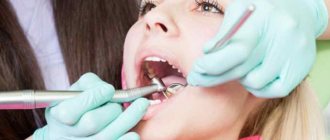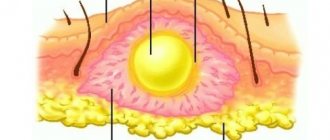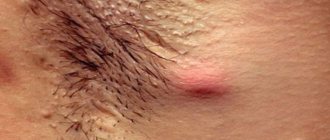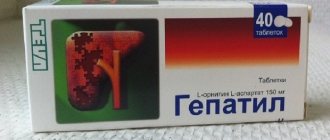The doctor makes the diagnosis of “post-extraction alveolitis” based on a visual examination. To confirm the diagnosis, X-ray diagnostics is prescribed. An x-ray can show changes in tissue, identify tooth fragments, a cyst or granuloma, which could cause inflammation.
The final result of treatment of alveolitis should be:
- Elimination of inflammation;
- Cleaning the hole from foreign bodies;
- Complete healing of the hole;
- Exclusion of the development of complications.
Treatment at the dentist
The doctor begins treatment by washing the socket and treating it with antiseptic solutions, and then cleans the socket from the remains of the blood clot using a surgical curette. Then the wound is dried with a gauze swab and treated with an anesthetic and antibacterial agents. The wound is covered with a bandage, which is designed to protect the open surface of the wound from possible biological, chemical or mechanical irritants. To check the possibility of detecting pieces of the extracted tooth in the socket, an x-ray can first be taken.
The procedure for cleaning the hole as a whole is carried out according to the following scheme:
- Local anesthesia is performed;
- The well is washed with an antiseptic solution (hydrogen peroxide solution 3%, chlorhexidine 0.05% or furatsilin 0.02%), and food debris and necrotic masses are removed;
- If there are foreign bodies in the hole (root fragments, cysts and granulomas), they are removed using special instruments;
- After cleaning the hole, it is treated with antiseptic solutions, dried with a sterile gauze swab, and turunda with an antiseptic and an anesthetic is injected into it. With a mild degree of inflammation, a turunda may not be necessary; thorough cleansing of the hole and subsequent care for it is sufficient;
- In case of a pronounced necrotic process in the hole, rinsing and application with trypsin is carried out - this is an enzyme preparation that accelerates the breakdown of dead tissue. Trypsin has anti-inflammatory and anti-edematous effects, helps clean the socket from necrotic masses and pus;
- After completing all the manipulations, the patient goes home, the doctor appoints appointment days when he needs to come for antiseptic treatment of the hole and change the turunda, if one has been installed. If necessary, a course of antibiotics is prescribed.
For alveolitis, antiseptic baths (not rinsing) with solutions of chlorhexidine 0.05% or miramistin 0.01%, which can be purchased ready-made at the pharmacy, are effective. When performing baths, the solution is taken into the mouth and held for several minutes, then carefully spat out. To relieve pain and reduce the degree of inflammation, nimesulide or ibuprofen are prescribed.
To prevent the turunda from falling out of the socket, during treatment you need to eat soft, pureed food and do not chew on the sore side. If the turunda does fall out, you need to rinse your mouth with chlorhexidine solution and immediately consult a doctor.
If this is not possible, you should rinse the hole yourself from food debris: to do this, bite off the sharp tip of the needle from a 5 ml syringe, bend it a little, and disinfect it with pure alcohol. A chlorhexidine solution is drawn into the syringe, the needle is inserted into the hole (not too deep) and the piston is pressed intensely to create a liquid pressure that can remove food debris.
All cases of alveolitis treatment are individual, so it may be necessary to visit the dentist up to several times.
With a favorable course of the healing process, the pain goes away, and the inflammatory process gradually subsides and disappears after a few days.
If the process, despite the procedures performed, progresses, then after antiseptics, gauze tampons soaked in propolis tincture or camvorophenol solution (10%) are inserted into the hole. A tetracycline-prednisolone cone inserted into the well has a good antibacterial effect.
How to treat alveolitis?
Effective treatment of such a disease can cause objective difficulties. The dentist must have extensive experience in the field of surgery in order to build a suitable plan for future treatment and implement it.
Read also: Mouth antiseptic
The treatment process for alveolitis consists of the following stages:
- Anesthesia of the affected area using local or trunk anesthesia.
- Washing out food particles, saliva and blood clot residues from the socket using a syringe and a blunt-tipped needle. To do this, use warm antiseptic solutions: furatsilin, hydrogen peroxide, manganese solution, chlorhexidine.
- Particles of tissue decay, food, bone or tooth root fragments, granulations that remain after washing are removed using a sharp surgical spoon. Actions must be carried out with great care, since it is impossible to injure the walls of the hole.
- Repeated rinsing of the extracted tooth socket with antiseptic solutions.
- Drying with a sterile cotton swab.
- Dust with anesthetic powder.
- Applying a gauze bandage with iodoform impregnation or an anesthetic and antiseptic bandage "Alvogyl".
As a dressing, you can also use biological antiseptic tampons, a hemostatic sponge with kanamycin or gentamicin, and paste preparations with antibiotics. The bandage performs a protective function, preventing mechanical, biological, chemical irritants and pathogens from entering the inflamed hole.
Pain in the socket with serous alveolitis disappears forever after such treatment. After two to three days, the inflammatory process subsides. If treatment is carried out when the disease has already taken a purulent form and the pain has become more intense, a strip of gauze with an anesthetic and antiseptic solution is inserted into the hole: alcohol tincture of propolis, camphorophenol liquid. Blockades (impregnation of soft tissues at the site of inflammation) of an anesthetic in combination with lincomycin, as well as the Traumeel solution, administered according to the principle of a conventional injection, are quite effective.
Proteolytic enzymes are used to cleanse the socket of tissue that has undergone necrosis. To do this, a gauze strip moistened with a solution of crystalline chymotrypsin or trypsin is inserted into the well. Enzymes gradually break down dead tissue and clean the wound surface.
Physiotherapy must be present during the treatment process. Apply: microwave therapy, fluctuarization, infrared laser rays, ultraviolet irradiation. Baths with a solution of manganese or sodium bicarbonate have good antiseptic properties.
Among medications, the patient is prescribed complex vitamins, analgesics and sulfonamide drugs. If there is a threat of further development of the disease, antibiotic therapy is carried out. This is daily:
- Treating the hole with antiseptics;
- Carrying out a blockade;
- Changing the bandage.
The procedures continue until the pain stops completely. After a week, the walls of the socket begin to heal and become covered with young mucous tissue, but signs of inflammation may still be present in the clinical picture. After a couple of weeks, the swelling subsides, the mucous membrane takes on a normal, pink color.
I recently went to have my lower molar removed because all that was left was a stump that was no longer suitable for a crown. The removal went quickly and without almost any pain, they prescribed me to rinse my mouth and sent me to treatment at home.
The very next day, severe pain began in the place where the tooth used to be and the gums became swollen. Another terrible bad breath appeared. In the end, I came to the doctor who pulled my tooth the day before. She looked and advised me to “brace up” and apply a heating pad with ice to my swollen cheek. After a couple of days, the swelling subsided, but the gums did not hurt any less. I took Nurofen several times a day. But the pain never stopped, so I went to that aunt again.
They took a picture and told me everything was fine, but there were sharp bones from where my tooth used to be. So they decided to remove them. It was very painful when they picked at my gums again and removed these “bones”, then they put gauze, forced me to bite and sent me home.
Within a couple of hours, hellish throbbing pains began, so I decided to go to a nearby private clinic, where everything was explained to me. It turns out that my tooth was removed poorly, there were many pieces left from the destroyed tooth and bones from the jaw, so it all mixed with infection and produced pus. With an injection, they cleaned it all out with absolutely no pain, put a gauze pad with ointment on top and gave me recommendations. On the same day I felt better, so I didn’t go back to the doctor who removed my tooth.
Procedures for continuing treatment at home
Treatment of alveolitis at home is carried out when acute symptoms have been eliminated, antiseptic turundas are no longer needed and the goal is to speed up the healing of the hole. For this use:
- Mouth rinses with infusions of chamomile, calendula, and sage. These medicinal plants have anti-inflammatory properties and accelerate healing processes. Rinsing is carried out several times during the day, always after meals.
- Applications with dental adhesive paste Solcoseryl. The drug belongs to the group of tissue regeneration stimulators: it accelerates healing, improves the supply of cells with oxygen and nutrients. The paste has a pleasant mint taste and contains the anesthetic component polidocanol 600. To properly apply the paste, you need to dry the hole with a gauze swab and fill it with Solcoseryl, lightly moisten the paste with water on top. The procedure is repeated several times a day as necessary; the paste is able to protect the socket throughout the day from mechanical and chemical influences.
- Taking vitamin preparations. You can purchase any vitamin and mineral complex at the pharmacy (Vitrum, Duovit, Complivit); Vitamins are taken to increase the body's defenses and shorten the recovery period.
Preventive measures
To prevent alveolitis, follow these recommendations after tooth extraction:
- For the first 3 days, do not rinse your mouth, but lightly rinse the hole with decoctions and prescribed antiseptics, putting them in your mouth for 10-20 seconds;
- After each meal, inspect the hole so that food does not get stuck in it; if necessary, rinse it, but with extreme caution;
- do not apply anything hot to your cheek and gum; heating the socket is strictly prohibited;
- stop smoking and alcohol until complete healing;
- do not self-medicate, and take only those medications prescribed by your doctor, and be sure to coordinate traditional medicine recipes with him;
- If pain and other symptoms do not go away within 3-5 days, contact your dentist.
Additional physiotherapy treatment (click to expand)
Physiotherapeutic treatment is an important addition to drug therapy; with the help of physiotherapy, the intensity of inflammation can be significantly reduced and healing time can be accelerated. For alveolitis, the following techniques are used:
- UV therapy - the hole is irradiated with short-wave ultraviolet light, which kills pathogenic microorganisms and reduces the level of inflammation.
- SMV therapy is a method of treatment with an electromagnetic field, based on the effect of centimeter waves on the area of inflammation. The procedure helps improve blood circulation and metabolism, due to which toxic substances are removed from tissues faster and regeneration processes are accelerated. SMV therapy also has an analgesic effect.
- UHF therapy – the body is exposed to a high-frequency electromagnetic field. For alveolitis, UHF therapy is used if the patient's regional lymph nodes are enlarged.
- Electrophoresis – medications are injected into inflamed tissue using electrical impulses. For post-extraction alveolitis, electrophoresis is used to reduce pain. For this purpose, solutions of novocaine, lidocaine, trimecaine are used.
- Fluctuarization is a treatment technique with pulsed currents of a sinusoidal shape with a low frequency. As a result of the procedure, blood circulation and lymph flow improves, swelling resolves, and the level of inflammation decreases.
- Laser therapy - the hole is exposed to infrared laser radiation, which has an anti-inflammatory effect, reduces swelling and redness of soft tissues, and accelerates healing.
Diagnosis of alveolitis
Diagnosis of alveolitis, as a complication after tooth extraction, is not particularly difficult - the diagnosis is made on the basis of the clinical picture, patient complaints, and examination of the wound surface.
Additionally, an x-ray of the socket is prescribed to exclude foreign bodies and remains of dental fragments.
It is important to understand that the symptoms of a dry socket are often combined or superimposed on other dental diseases, therefore alveolitis must be differentiated from pulpitis of neighboring teeth, odontogenic infections, sinusitis, inflammation of the trigeminal nerve, jaw trauma, and sharp edges of the alveoli.
Complications of alveolitis
If alveolitis is not treated in a timely manner, the following complications may develop:
- Odontogenic sinusitis is an inflammation of the maxillary sinus caused by the spread of infection from the inflamed sockets after the removal of premolars or molars of the upper jaw;
- Phlegmon - purulent inflammation spreads to the surrounding soft tissues;
- Acute periostitis - pus accumulates in the periosteum area;
- Odontogenic osteomyelitis is a purulent-necrotic lesion of the jaw bone;
- Sepsis - an infection enters the bloodstream, causing it to become infected.
Alveolitis itself is not so dangerous, but its complications are life-threatening. Therefore, if you notice symptoms of alveolitis, contact your doctor immediately.
Forms of alveolitis
The disease occurs in several forms:
- Serous. Inflammation is accompanied by pain and hyperemia of the gums, but there is no temperature or exudate.
- Purulent. Granulations with droplets of pus are noticeable in the hole. There is cyanosis and swelling of the tissues.
- Purulent-necrotic. The most complex form often requires surgical intervention. The patient feels a sharp sharp pain radiating to the ear, jaw, temple, it is difficult for him to open his mouth, the temperature rises, severe swelling and a putrid odor appear, and a dirty gray coating with remnants of dead tissue is found at the bottom of the hole.
With conventional extraction, alveolar osteitis develops in 3–5% of patients.
Dry socket after tooth extraction is diagnosed based on visual examination and x-rays. The pictures reveal the remaining particles.
Treatment is usually carried out by the doctor who removed the tooth. It consists of several stages:
- Pain relief with local anesthesia.
- Treatment with antiseptic solutions. Medicines are administered with a syringe with a blunt, wide needle. Chlorhexidine, potassium permanganate, Miramistin are used.
- Cleaning the hole from food debris, pus, granulations.
- Curettage. The dentist scrapes the internal surfaces with a surgical spoon.
- Repeated rinsing with antiseptics.
- Applying a bandage with analgesics and disinfectants.
In the serous form, the bandage is changed one day after the manipulation, then every 3 days. For purulent and purulent-necrotic types of the disease, new tampons are placed every day. Also, in the last two cases, broad-spectrum antibiotics are prescribed.
A dry socket after extraction in 100% of cases leads to the development of alveolitis.
To speed up therapy, physiotherapy, oral baths with soda solution and analgesics may be prescribed. Recovery occurs after 3 days or a couple of weeks, depending on the extent and form of the lesion.
Important! There is an alternative treatment. It is carried out when the clot has just fallen out and the dry socket has not yet become clogged with food debris, pus, or in case of a chronic course. After anesthesia and curettage, bleeding begins. The dentist applies an antiseptic, sutures the edges of the gums and packs the wound. This will re-form a clot.
A dry socket after extraction in 100% of cases leads to the development of alveolitis. Inflammation first affects the alveoli, and if left untreated, spreads to neighboring tissues. Treatment includes curettage and antiseptic treatment. It is performed by a dental surgeon. To avoid complications, you must follow your doctor's recommendations.
The patient's role in the prevention of alveolitis
According to statistics, in most cases, the cause of the development of post-extraction alveolitis is the patient’s incorrect actions after tooth extraction, ignoring the recommendations of the attending physician. After tooth extraction it is prohibited:
- Remove the blood clot from the socket. The blood clot that forms in the hole after tooth extraction prevents microbes from entering the wound, and the healing process under it proceeds quickly and without complications. Patients can remove the clot by touching it with the tongue, with fingers, by vigorously rinsing the mouth immediately after tooth extraction, and also while eating solid foods.
- Do hard physical work, sports, take hot baths, go to the sauna. Intense loads and elevated temperatures provoke the opening of the wound, and bleeding resumes; pathogenic microorganisms can enter the wound.
- Smoking, drinking alcohol. Bad habits lead to excessive irritation of the mucous membranes, healing of the hole is much slower, and inflammation may occur.
To speed up healing and prevent the development of inflammation in the socket, you need to:
- In the first few days after tooth extraction, review your menu, excluding spicy, too salty, sour, and hot dishes. All food should be soft, pre-chopped;
- Maintain careful oral hygiene. The presence of chronic inflammation of the gums and carious teeth in the mouth can cause infection of the socket, so after tooth extraction you need to carry out antiseptic baths (they should be prescribed by a doctor);
- After each meal, rinse your mouth with clean water to remove any remaining food; this must be done very carefully so as not to remove the blood clot covering the hole;
- Brush your teeth carefully, trying not to touch the socket with the brush.
Alveolitis after tooth extraction: symptoms
As for the general symptoms, since alveolitis is not an acute inflammatory process, it usually does not cause fever or inflammation of the submandibular lymph nodes. However, when it lasts for a long time, patients often feel weakness, fatigue, and the temperature may rise (but not higher than 37.5 degrees).
- Patient complaints include aching or throbbing pain in the area of the extracted tooth socket (of varying severity - from moderate to severe).
Sometimes alveolar pain can also spread to other areas of the head and neck. When alveolitis develops, pain usually occurs 2-4 days after removal, and can last from 10 to 40 days - in the absence of qualified treatment. Sometimes the pain is so severe that even very strong analgesics do not help. In addition, almost all patients report bad breath and an unpleasant taste in the mouth.
- When visually examining the socket, you can see an empty socket in which there is no blood clot (in this case, the alveolar bone in the depths of the socket will be exposed).
Or the socket may be completely or partially filled with food debris or necrotic disintegration of a blood clot. By the way, if the alveolar bone is exposed, it is usually extremely painful when touched, as well as when in contact with cold or hot water. In some cases, the edges of the mucous membrane converge so closely to each other above the hole that it is completely impossible to see what is happening in its depths. But when washing such a hole from a syringe with an antiseptic, the liquid will be cloudy, with a lot of food residue.
Dry socket after wisdom tooth removal –
Alveolitis after wisdom tooth removal may in addition have several more symptoms (in addition to those listed above). We are talking about difficulty opening the mouth or painful swallowing (24stoma.ru). Also, due to the fact that the socket of the 8th tooth is usually located deep in the soft tissues, suppuration from the socket often develops there (see video 2).
Alveolitis: video
In video 1 below you can see that there is no blood clot in the socket, there is exposed bone, and also in the depths of the socket it is filled with food debris. And in video 2 - alveolitis of the lower wisdom teeth, when the patient presses his finger on the gum in the area of 7-8 teeth, and copious purulent discharge comes from the holes.
The role of the doctor in excluding the possibility of alveolitis
Actions of the dental surgeon to exclude alveolitis:
- Thoroughly clean the socket so as not to leave a tooth fragment or cyst in it. After extracting a tooth, especially a damaged one, a control x-ray of the socket is often taken;
- Be careful and avoid injury. The tooth extraction was accompanied by bone injury due to the inept actions of the doctor. Usually the bone is injured during complex extraction, when tooth extraction cannot be carried out using conventional instruments. Difficult procedures include the removal of unerupted and incorrectly positioned wisdom teeth, multi-rooted teeth, and teeth with curved or destroyed roots. An inexperienced doctor may not understand the situation and damage the bone;
- Control during anesthesia. An overdose of anesthetic leads to a sharp decrease in the amount of blood released after tooth extraction and insufficient formation of a blood clot;
- Prescribing appropriate antibacterial drugs, especially if the tooth extraction was difficult or was carried out against the background of purulent inflammation.
Therefore, it is very important to seek help from competent and experienced specialists who are fully familiar with all the intricacies of the tooth extraction procedure.
Sometimes alveolitis can develop despite preventive measures taken due to certain reasons. These reasons include:
- Reduced immunity of the patient, inability of tissues to regenerate;
- Tendency to bleed, resulting in a blood clot not forming;
- An increase in the amount of the hormone estrogen in women when taking hormonal contraceptives or certain diseases, which leads to the destruction of a blood clot.
A timely visit to the dentist if alveolitis develops is the key to a quick cure. Patients of our clinic who have undergone tooth extraction surgery receive detailed recommendations on oral care; if they are strictly followed, the likelihood of developing alveolitis is excluded.
Causes, symptoms and treatment of dry socket
Alveolitis is the most common complication after tooth extraction. It appears against the background of a dry socket - when a blood clot does not form or is washed out of the alveoli. The disease is accompanied by inflammation, acute pain, hyperemia and swelling of tissues.
20 - 30 minutes after extraction (removal), the bleeding stops, and the tooth socket is filled with a blood clot. This is a natural defense mechanism. It prevents pathogenic microorganisms from entering soft tissues and bones.
But if a blood clot does not form, alveolitis begins to develop after 2–3 years. Other names for the disease are alveolar alveolitis or alveolar osteitis.
Dry socket syndrome is characterized by:
- acute pain, it can radiate to the ear or temple;
- putrid odor from the mouth;
- temperature rise – from 37.5°C;
- formation of dirty gray plaque;
- discharge of pus;
- unpleasant taste;
- swelling and redness of the gums;
- general weakness.
If a blood clot does not form, alveolitis begins to develop after 2–3.
Important! Patients may confuse purulent discharge with a fibrous film. On the second day, the clot becomes covered with a yellowish-white coating. This is a normal process that occurs due to the production of fibrin.
But the main sign of developing alveolitis is the absence of a clot in the wound. If it does not form or falls out, you should consult a doctor. The sooner treatment is started, the easier the recovery will be.
Alveolitis appears due to:
- washing out the clot during intensive rinsing - this can be done no earlier than 3 days after surgery;
- severe tissue trauma during complex extraction;
- non-compliance with the rules of asepsis and antisepsis during manipulation;
- fragments, roots, granulomas, cysts remaining in the alveolus;
- lack of hygiene;
- Neglect of doctor’s recommendations: heavy physical activity, visiting the sauna, eating hard and hot foods, alcohol;
- smoking - abstain from it for at least 3 hours, preferably 2 - 3 days.
Dry socket after tooth extraction is diagnosed based on visual examination and x-rays.
Important! Indirectly, the development of the disease is facilitated by the use of oral contraceptives, aspirin, menstruation, and systemic diseases that impair blood clotting. These factors provoke prolonged bleeding, due to which a blood clot cannot form.
Sometimes the clot is washed out when bleeding recurs. It opens after 1.5 – 4 hours. Its cause is the administration of anesthetic drugs with a high content of adrenaline. It leads to temporary vasospasm.
With conventional extraction, alveolar osteitis develops in 3–5% of patients. After wisdom tooth removal, the probability increases to 25–30%.
The sooner you start treatment, the easier it is
Alveolitis after tooth extraction, as you already understand, is not a joke problem, its symptoms are quite pronounced, and the photos perfectly demonstrate the unattractiveness of the picture. This is not a pleasant sight, so the doctor will make a diagnosis almost without difficulty. To fully analyze the situation, the specialist will refer you for an x-ray or computed tomography scan of the jaw.
Before treatment you need to undergo a tomography of the jaw
“I had my wisdom tooth removed because I was so tired of it. Four days after the operation, I began to notice severe discomfort, especially when I ate food. The pain became so strong and cutting that tears flowed from the eyes. I suffered for a week, then went to the doctor. They said that a purulent process had already begun in my socket, and I would have to undergo treatment for a long time, and several other neighboring teeth had to be removed later, since they were caught in a complication. Now I’m thinking about how to solve the problem, the doctor recommends implantation.”
Ksenia Probezhtseva, St. Petersburg, from correspondence on forums
If the tooth socket becomes inflamed after extraction, only a doctor should prescribe treatment; do not prescribe it for yourself. This is fraught with consequences. The specialist will first determine the severity of the disease. And if it is at the initial stage, then, first of all, it will clean the hole from foreign bacterial masses, wash it with antiseptic solutions, and remove granulation lesions.
Only a specialist can treat the problem
Here we can talk about partial removal of bone or even neighboring teeth if the inflammation has gone beyond the hole. All this is done under anesthesia, so there is no need to be afraid. Plus, the doctor will apply applications with an antiseptic, as a result of which the symptoms will subside in a few days. But treatment will need to be continued at home, with the help of rinses and local strengthening of the immune system.
If alveolitis is in an advanced stage after tooth extraction, and the patient has already begun necrotic processes, then treatment will take at least several weeks and will consist of the following measures:
- systematic relief of acute pain using lidocaine and other anesthetics,
- antibiotic therapy and regular rinsing, vitamin therapy,
- physiotherapy: laser, ultraviolet rays and more.
The editors believe that these are sufficient grounds for contacting a dentist at the slightest sign of discomfort that does not subside but continues to intensify a week after surgery. Timely measures will protect you from complications.
Notice
: Undefined variable: post_id in
/home/c/ch75405/public_html/wp-content/themes/UltraSmile/single-item.php
on line
45 Notice
: Undefined variable: full in
/home/c/ch75405/public_html/wp-content /themes/UltraSmile/single-item.php
on line
46
Rate this article:
( 2 ratings, average: 5.00 out of 5)
removal of a tooth
Consulting specialist
Vataev Vladislav Olegovich
Doctor rating: 9.5 out of 10 (2) Specialization: Therapist, surgeon, orthopedist Experience: 13 years











